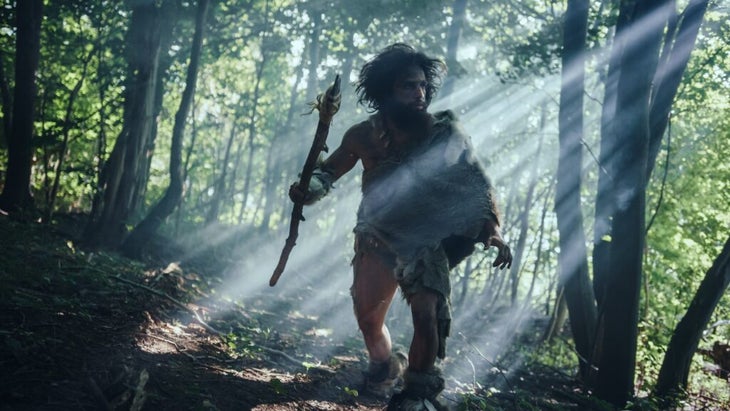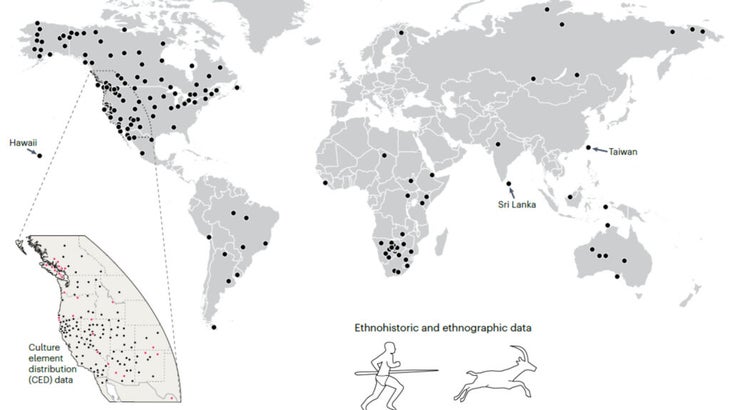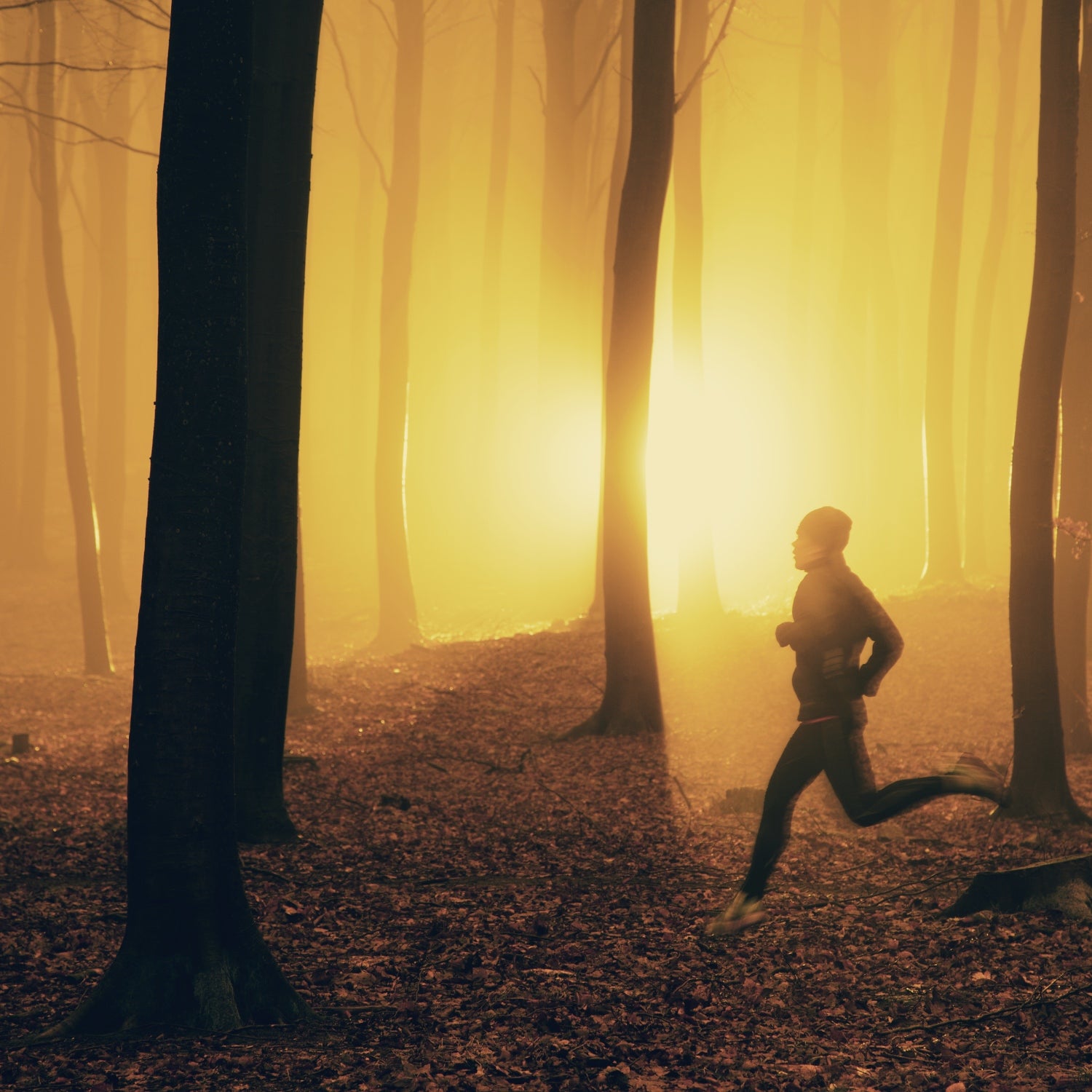The theory that human endurance evolved out of our need to outrun our prey has intrigued runners for four decades. After all, the idea of “persistence hunting” presents a much more romantic explanation for our otherwise pathological obsession with slogging through the Trial of Miles. According to the original endurance hunting theory laid out in , modern runners are actually expressing the essential spirit of our species. It is running that, as the cliché goes, —and that’s why so many of us still run.
It’s such a lovely theory that, in the running world at least, we mostly tried not to probe it too closely. In the scientific world, though, there have long been doubters. In particular, the hypothesis has two main weak points. One is that running incinerates calories, which is great if you’re trying to lose weight but highly problematic if you’re trying to eke out a precarious living on the savanna. The other is that, among the hunter-gatherer societies that maintained their traditions into the 20th century and beyond, persistence hunts seem to be rare novelties that only occur in a few special places. No one doubts that we can run down antelopes, but it doesn’t seem to be the kind of core pursuit that would shape our evolution.
Happily, counters those criticisms with fresh data, bolstering the case that persistence hunting—and, by extension, running itself—is a key part of our collective history. Eugène Morin of Trent University and Bruce Winterhalder of UC Davis bring together several different lines of evidence to argue that persistence hunting was worth the caloric price, and took place in virtually every corner of the globe—not just on the African savanna, but in dense woodlands, on mountain slopes, and across snow-covered wastelands.
Humans Have Clear Endurance Advantages
David Carrier’s original endurance hunting theory was further by Daniel Lieberman and Dennis Bramble, then made famous in Christopher McDougall’s 2009 bestseller Born to Run. According to the theory, we have a bunch of traits that make us good long-distance runners. Most importantly, we have lots of efficient and fatigue-resistant slow-twitch muscle fibers in our legs, and we can cool ourselves by sweating from our mostly hairless body surfaces. There’s a long list of other potentially advantageous adaptations, from flexible breathing patterns to long Achilles tendons. These features suggest that our bodies were shaped by evolution to be good at endurance running.
There’s no doubt, though, that running burns more calories than walking to cover a given distance. If you’re tracking an antelope, wouldn’t it make more sense to be patient and stick to walking along its trail? Morin and Winterhalder calculate the return rate for various hunting scenarios, taking into account the calories you’ll burn in the pursuit, the chances of success or failure, and the calories you’ll get from the animal to produce an overall estimate of how many calories per hour each hunting method is “worth.”
Surprisingly, the faster you go, the more rewarding the hunt is. Faster speeds burn more calories per unit time but take less time to catch the animal; the time savings outweigh the extra cost of running. The benefits of ending the hunt sooner are so big that it’s still more efficient to run even if you have to cover twice the distance that you would if you walked.

Morin and Winterhalder and their colleagues have done similar calculations for other types of hunting—“encounter” and “communal drive”—and find that the return rates are similar, or in some cases even better for persistence hunts, depending on the context. For example, the persistence hunter has an advantage when the terrain impedes the prey: pursuing game through deep or crusty snow is effective if you’ve got snowshoes or skis. Hot weather also favors humans over animals like deer, which cool themselves by panting, though it’s possible to run them to overheating even in moderate conditions.
All this is interesting but theoretical. How do these numbers translate to real-world behavior? The other part of the study is a new examination of old ethnographic sources that have been digitized in recent years, making them easier to search. The researchers assembled 8,000 publicly available “memoirs, travelogs, missionary accounts” and other documents, and used content analysis software to look for passages where words such as “run down,” “tiring,” “game,” and “animal” occurred close together. Amazingly, they turned up 391 descriptions of persistence hunts dating from the 1500s to the 1900s, occurring on every continent except Antarctica and in a wide variety of different environments and societies.
Persistence Hunting Was Widespread
Most of the previously known accounts of persistence hunting came from hot, open plains in Southern African, the American Southwest, and Australia. The new accounts cover a much broader territory: native Hawaiians “jog-trotting” over rocky terrain until wild goats give up in exhaustion; single unaccompanied Beothuks in Newfoundland running down fat stags; Dayaks in Borneo taking advantage of hot, dry days to catch deer. Around 40 percent of the hunts were in forest, taiga, or rainforest, and another 20 percent were in environments with mixed vegetation.
Here’s a map of where the accounts come from:

There’s a big gap in southern Eurasia, which is probably because hunter-gatherer societies in those regions were replaced by farmers long before there were written records or curious anthropologists. And there’s a big cluster along the west coast of North America, thanks to a massive ethnographic project undertaken by the University of California in the 1930s and 1940s. This Cultural Element Distribution project systematically surveyed 141 societies in the region; 114 of them, or 81 percent, reported persistence hunting, bolstering the claim that this was a widespread activity rather than a rarity. (In the inset, persistence-hunting societies from this survey are shown with black dots; non-persistence-hunting ones are red dots. If you can see the difference, your eyes are better than mine.)
The upshot of all this data-crunching is a much more robust claim that persistence hunting was a widespread human activity that could well have shaped our evolution. “The emergence of endurance running,” Morin and Winterhalder write, “also informs our predilection for recreational running.” In other words, yes, we were born to run. But don’t feel bad if you read these accounts and think, “Oh man, I’ve been training for all these years and there’s still no way I could run down a deer.” That, too, is a tale as old as time.
“In the old days we used to hunt with the bow and spear,” a Gwich’in elder in northwestern North America lamented in the 1850s. “Our young men were strong in those days. We hunted the moose by running him down on snowshoes, and we could run all day, such as wolves. Now our young men are become lazy and feeble. They prefer to hunt the moose in the fall, when he is easy to kill. They ride on their dog-sleds and are afraid to run all day.”
For more Sweat Science, join me on and , sign up for the , and check out my book .


